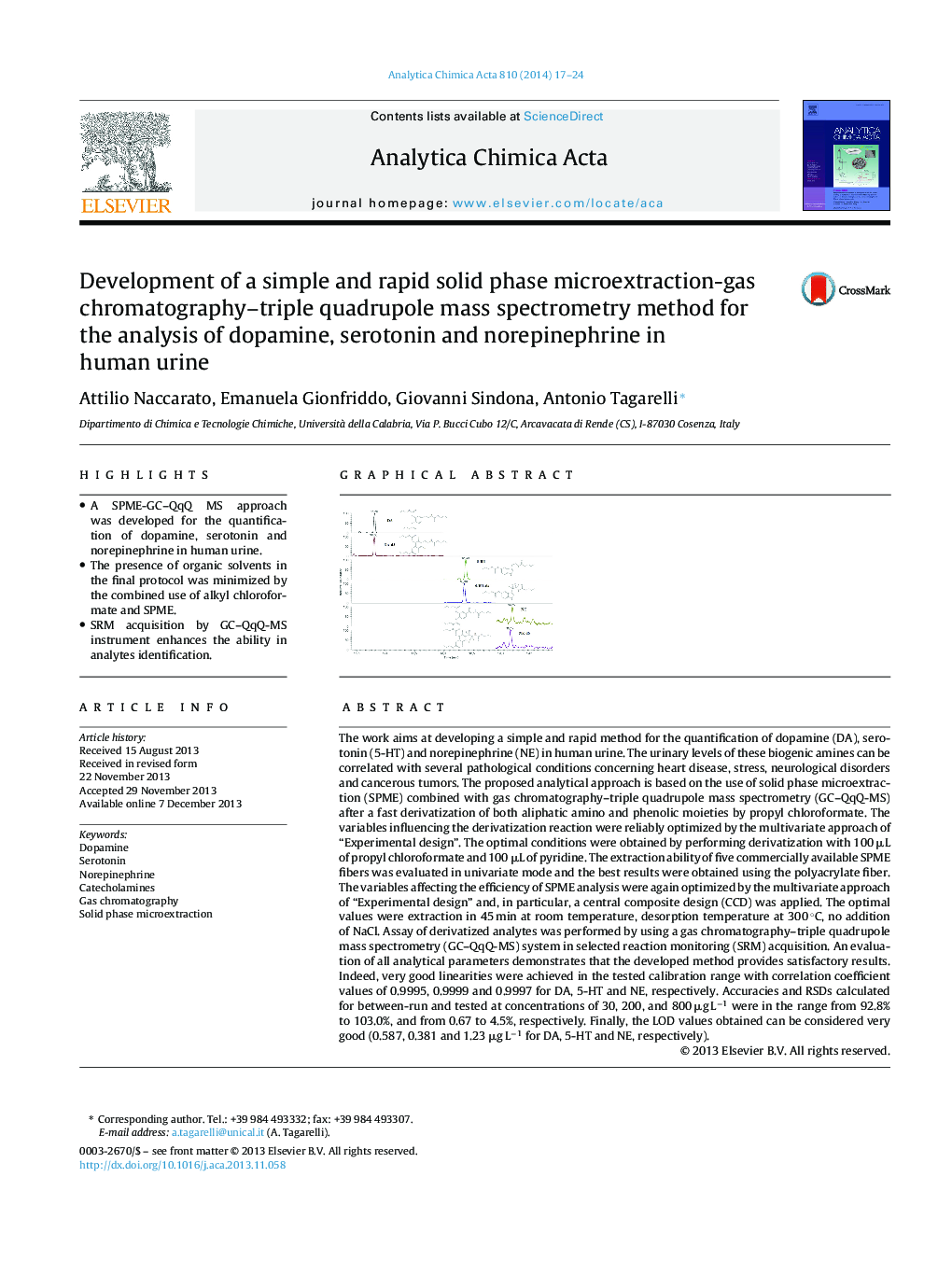| کد مقاله | کد نشریه | سال انتشار | مقاله انگلیسی | نسخه تمام متن |
|---|---|---|---|---|
| 1164225 | 1491022 | 2014 | 8 صفحه PDF | دانلود رایگان |

• A SPME-GC–QqQ MS approach was developed for the quantification of dopamine, serotonin and norepinephrine in human urine.
• The presence of organic solvents in the final protocol was minimized by the combined use of alkyl chloroformate and SPME.
• SRM acquisition by GC–QqQ-MS instrument enhances the ability in analytes identification.
The work aims at developing a simple and rapid method for the quantification of dopamine (DA), serotonin (5-HT) and norepinephrine (NE) in human urine. The urinary levels of these biogenic amines can be correlated with several pathological conditions concerning heart disease, stress, neurological disorders and cancerous tumors. The proposed analytical approach is based on the use of solid phase microextraction (SPME) combined with gas chromatography–triple quadrupole mass spectrometry (GC–QqQ-MS) after a fast derivatization of both aliphatic amino and phenolic moieties by propyl chloroformate. The variables influencing the derivatization reaction were reliably optimized by the multivariate approach of “Experimental design”. The optimal conditions were obtained by performing derivatization with 100 μL of propyl chloroformate and 100 μL of pyridine. The extraction ability of five commercially available SPME fibers was evaluated in univariate mode and the best results were obtained using the polyacrylate fiber. The variables affecting the efficiency of SPME analysis were again optimized by the multivariate approach of “Experimental design” and, in particular, a central composite design (CCD) was applied. The optimal values were extraction in 45 min at room temperature, desorption temperature at 300 °C, no addition of NaCl. Assay of derivatized analytes was performed by using a gas chromatography–triple quadrupole mass spectrometry (GC–QqQ-MS) system in selected reaction monitoring (SRM) acquisition. An evaluation of all analytical parameters demonstrates that the developed method provides satisfactory results. Indeed, very good linearities were achieved in the tested calibration range with correlation coefficient values of 0.9995, 0.9999 and 0.9997 for DA, 5-HT and NE, respectively. Accuracies and RSDs calculated for between-run and tested at concentrations of 30, 200, and 800 μg L−1 were in the range from 92.8% to 103.0%, and from 0.67 to 4.5%, respectively. Finally, the LOD values obtained can be considered very good (0.587, 0.381 and 1.23 μg L−1 for DA, 5-HT and NE, respectively).
Figure optionsDownload as PowerPoint slide
Journal: Analytica Chimica Acta - Volume 810, 31 January 2014, Pages 17–24